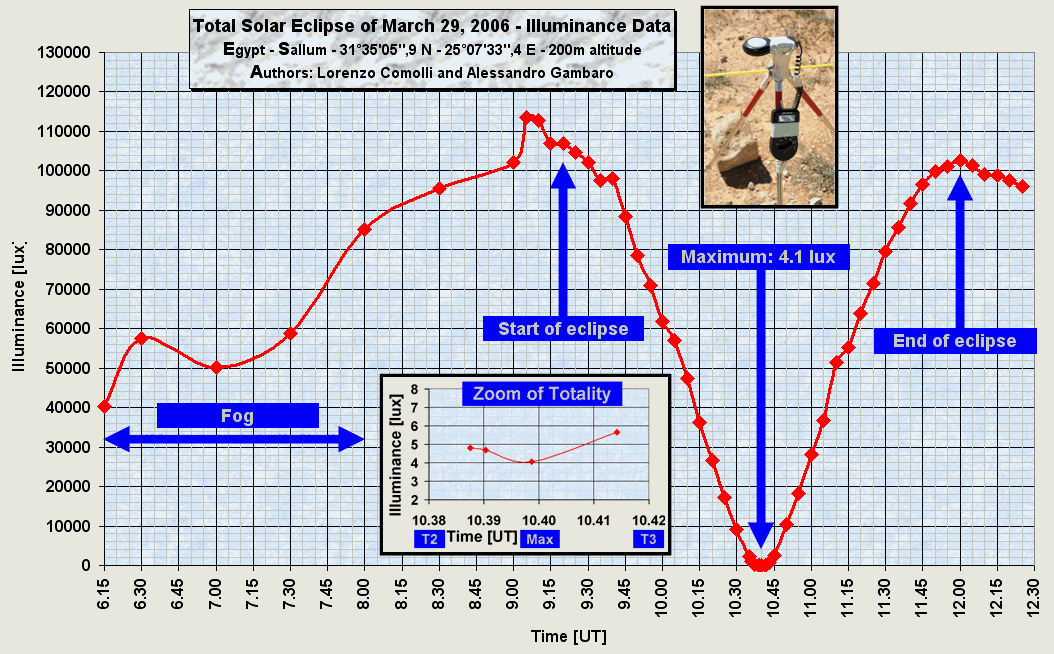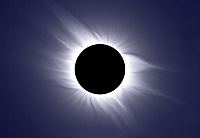
The temperature trend show a maximum abour 25 minutes after the T1, and
a minumum after 15 min from totality, as predicted considering the
inertia of the atmosphere.
We
measured a 3°C fall of the
temperature (4°C respect to the trend), definitely less than the
7°C of
the total solar eclipse of 1999 in Hungary, but more than the last
anular eclipse of 2005 in Spain where the fall was only of 0.5°C.

The relative humidity data show an inverse trend respect to temperature
(a lowering in temperature imply an increase in the relative humidity).
From the 43% minima obtained before totality, the RH rised to 58% about
15 min after totality.

During this eclipse we were able to measure the environmental light
with a digital luxmeter. The luxmeter was placed horizontally at about
1m from the ground to avoid that the near people and telescope affect
the measurements. The acquired data show the enormous fall between full
Sun (more than 113000 lux) and totality (only 4.1 lux).
The luminance was reduced only to 0.0036%, or 1/28000. Also during totality a
trend is visible, with the minimum reached at the maximum phase,
indicating that also the internal corona gave a contribution to the
measurements.
 The pressure was nearly constant, at
about 992 mbar. The measurements were done with a watch, with a
resolution of 1 mbar.
The pressure was nearly constant, at
about 992 mbar. The measurements were done with a watch, with a
resolution of 1 mbar.







